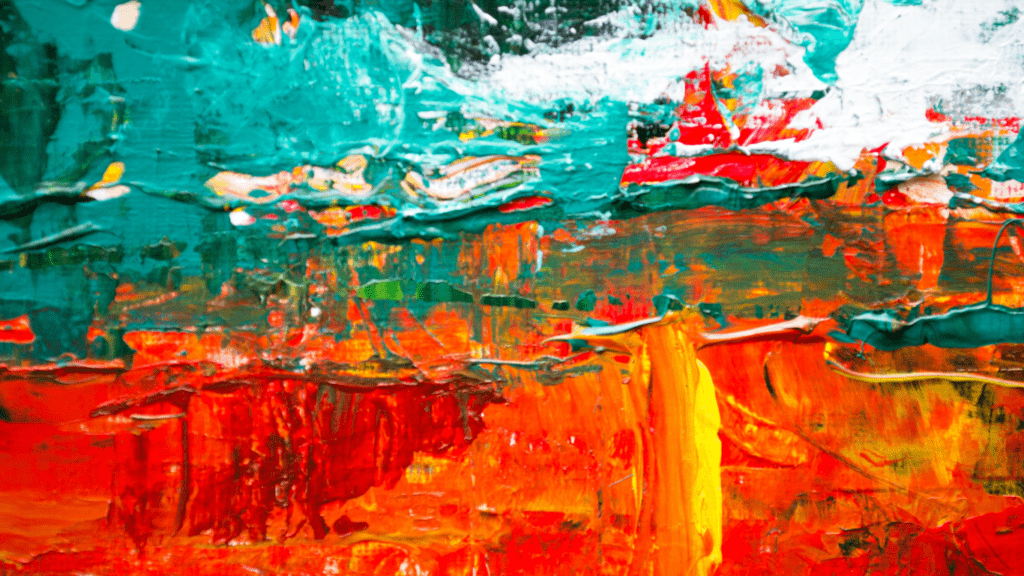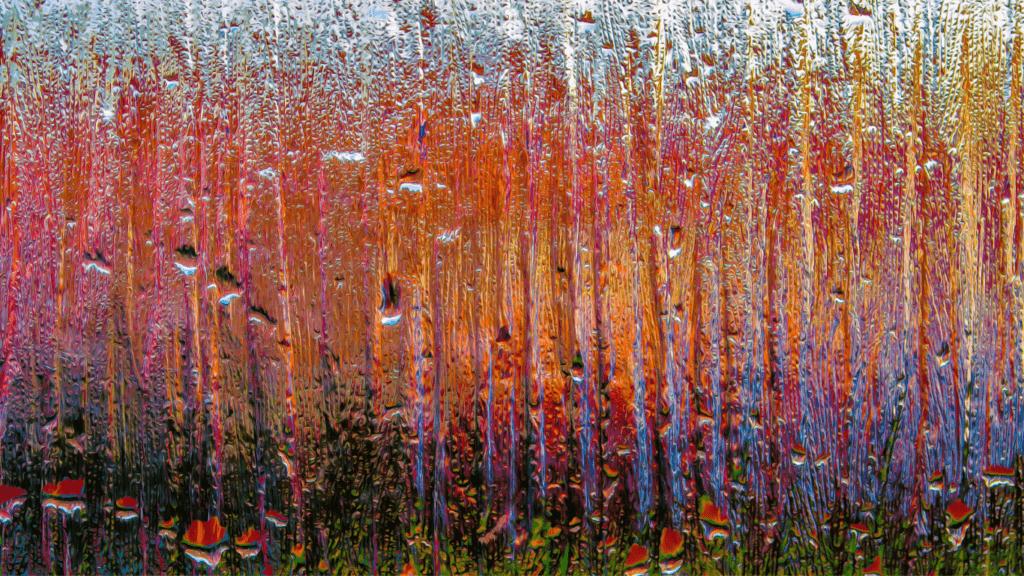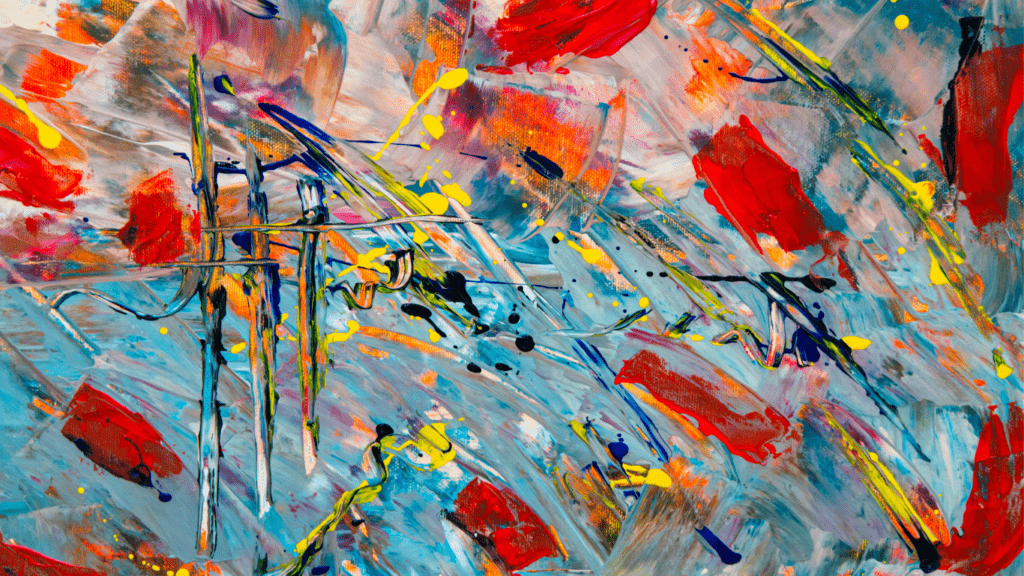The Origins Of Abstract Expressionism
Abstract Expressionism emerged in the 1940s, dramatically altering the art world. This movement focused on spontaneous, subconscious creativity and emotional expression.
The Birth Of A Movement
The movement began in New York City post-World War II, reacting to global turmoil. Artists turned inward, exploring abstract forms to convey complex emotions. Influenced by European Surrealists and the horrors of war, these pioneers found new ways to express raw humanity through their work.
Influential Early Artists
Key figures defined the early years of Abstract Expressionism. Jackson Pollock introduced drip painting, applying paint to canvas through dynamic, seemingly chaotic methods. Mark Rothko developed color field painting, using large blocks of color to evoke emotion. Willem de Kooning created gestural abstractions, blending aggressive strokes with hints of recognizable forms.
These artists, alongside others like Franz Kline and Lee Krasner, shaped the foundations of Abstract Expressionism. Each innovator contributed unique techniques and perspectives, firmly establishing the movement’s significance in contemporary art history.
Jackson Pollock
Jackson Pollock was a pivotal figure in Abstract Expressionism, renowned for his revolutionary painting techniques and dynamic works.
Life And Career
Born on January 28, 1912, in Cody, Wyoming, Jackson Pollock rose to prominence in the 1940s. He moved to New York City in 1930, where he studied under Thomas Hart Benton at the Art Students League. By the early 1940s, Pollock had begun to develop his distinct abstract style. His breakthrough came in 1947 when he introduced the drip painting technique, marking a radical departure from conventional art forms. Pollock’s fame soared, but he also struggled with alcoholism. On August 11, 1956, Pollock’s life tragically ended in a car crash in East Hampton, New York.
Signature Techniques And Styles

- Pollock’s most notable technique, drip painting, involved dripping or pouring paint onto a canvas laid flat on the ground.
- This method allowed him to work from all angles, creating complex, intertwined layers of paint.
- He famously used household paints rather than traditional artist materials, leading to the unique texture and viscosity of his works.
- Pollock’s style embodied spontaneity and raw emotion, reflecting the core principles of Abstract Expressionism.
- His notable works include “No. 5, 1948”, “Autumn Rhythm (Number 30)”, and “Blue Poles”, which illustrate his mastery of movement and form.
Mark Rothko
Mark Rothko, a key figure in Abstract Expressionism, is known for his distinctive color field paintings. His works often evoke deep emotional responses through their use of large, vibrant blocks of color.
Personal Background
Mark Rothko, born Marcus Rothkowitz in 1903 in Latvia, immigrated to the United States with his family in 1913. He grew up in Portland, Oregon, and attended Yale University before moving to New York City to pursue art. Rothko’s early works were influenced by mythology and surrealism, but he later transitioned to abstract forms.
Major Works And Contributions
Rothko’s major contributions revolve around his innovative approach to color and form. His seminal works include the Seagram Murals (1958-1959), which exemplify his mature style of large rectangular fields of color stacked vertically. Another key piece is “No. 61 (Rust and Blue),” created in 1953, showcasing his mastery of color harmony. Rothko’s works are featured in major museums globally, affirming his lasting impact on contemporary art.
Willem De Kooning
Willem De Kooning, a pivotal figure in Abstract Expressionism, stood out with his dynamic forms and powerful brushstrokes. His innovative approach left a lasting mark on modern art.
Early Life And Influences
Born in Rotterdam, Netherlands, in 1904, De Kooning trained at the Rotterdam Academy of Fine Arts and Techniques. He moved to the United States in 1926. Early influences included classical masters and modernists like Arshile Gorky, who played a role in his artistic development. Exposure to New York’s art scene also profoundly shaped his style.
Notable Art Pieces
De Kooning’s “Woman I” (1950-1952) remains one of his most famous works. This piece, part of a series, captures energy and aggression through abstract yet recognizable female forms. Another significant work, “Excavation” (1950), showcases his skill in creating complex, layered compositions. His contributions have earned places in major art institutions, cementing his legacy in Abstract Expressionism.
Lee Krasner
Lee Krasner played a pivotal role in Abstract Expressionism. Known for her innovative techniques and integration into the movement, she overcame significant challenges to make her mark.
Overcoming Barriers
Krasner faced considerable gender bias in the male-dominated art world. Despite these obstacles, she pursued her passion for art with unwavering determination. She trained at the Cooper Union, the Art Students League, and Hans Hofmann’s School of Fine Arts, where she honed her skills. Krasner also overcame personal struggles, including the challenge of maintaining her artistic identity while being married to Jackson Pollock, a leading figure of Abstract Expressionism.
Artistic Achievements
Krasner’s contributions to Abstract Expressionism extend beyond her marriage to Pollock. She created pioneering collage paintings, such as “The Seasons” (1957), which showcased her ability to blend elements from earlier works into new compositions. Krasner’s work was characterized by bold color choices and dynamic forms, which helped redefine the boundaries of the movement. Her retrospective at the Museum of Modern Art in 1984 solidified her legacy as a trailblazer in Abstract Expressionism.
Franz Kline
Franz Kline, a central figure in Abstract Expressionism, is known for his bold, dynamic brushstrokes and monochromatic palette. His work continues to influence contemporary art.
Unique Approach To Art
Kline’s distinctive style emerged in the 1950s, characterized by large black and white canvases. Unlike his peers who used color to convey emotion, Kline employed stark contrasts and sweeping gestures to create impactful compositions. Using house paint and commercial brushes, he emphasized spontaneity and raw expression. His technique transformed ordinary materials into extraordinary works of art.
Legacy And Impact
- Kline’s influence in Abstract Expressionism remains substantial. His minimalist yet powerful approach paved the way for future artists exploring similar themes.
- His works, such as “Mahoning” (1956) and “Painting Number 2” (1954), are celebrated in major museums worldwide, including the Museum of Modern Art and the Whitney Museum of American Art.
- Kline’s contributions continue to inspire and challenge new generations of artists.





